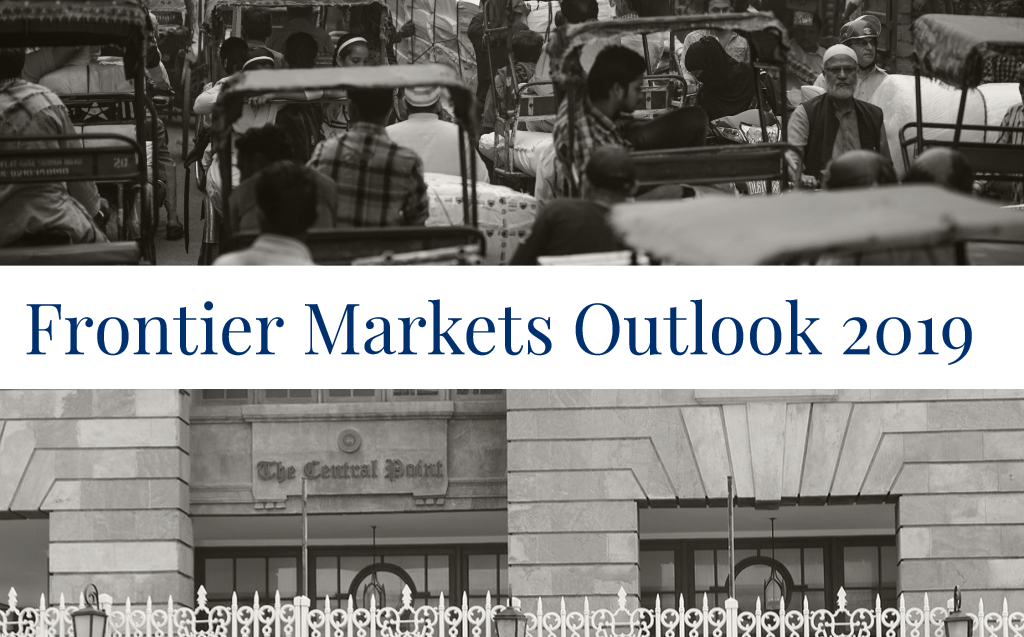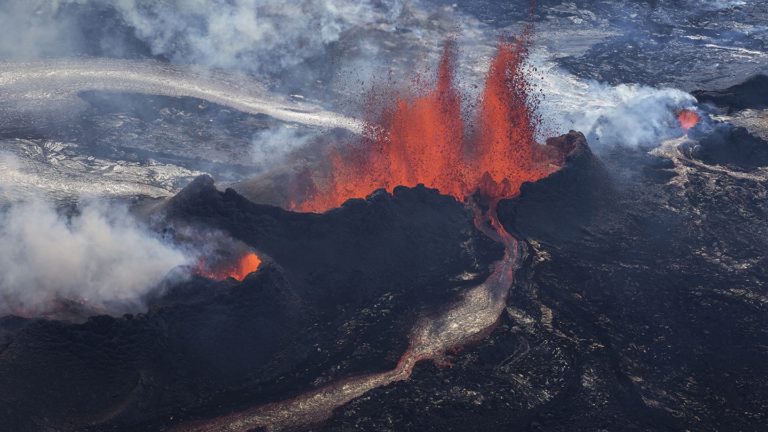Frontier Market Outlook 2019 – Shadows Gather
Frontier Markets Outlook 2019
It’s been a strange year in South Asia. Generally, it remains one of those peculiar economic regions not quite on par with the sort of rapid industrial development of East Asia, or the oil-fuelled madness of the Middle East. At the same time growth remains pretty much consistently higher than African opportunities, or those in Central or Latin America. Top that off with intense population growth, slowly improving infrastructure, and strong global cultural connections, the area remains potentially lucrative.
All this being said, our outlook is considerably less rosy than last year. As described below, 2018 saw some trends which may result in negative outcomes in the next 12 months.
Afghanistan
In the 1950s and 1960s, Afghanistan seemed like one of Asia’s great success stories. With both the US and the USSR competing for favors in the strategically important nation, Afghans could reap the rewards of huge tranches of investments, massive infrastructure projects, and relatively stable international relations.
As we know, it didn’t last. Ripped apart by civil war and foreign invasion for the last forty years, Afghanistan remains a catastrophically militarized and impoverished place. An entire generation – not unlike that in Palestine – have grown up with next to no prospects and very little education. What infrastructure was built up during the war is now long gone, obliterated by IEDs, Soviet missiles, American bombing runs, and plain neglect?
The Taliban is now firmly ensconced in the wild rural areas of the country, and, perhaps worst of all, the US under Donald Trump is threatening to stage a full-scale withdrawal. The situation is not unlike what existed in Vietnam prior to the US exit in the mid-1970s, or in Afghanistan itself on the eve of the Soviet withdrawal in the 1980s: a weak central government beset by a rural insurgency as tenacious as mold on bread. Don’t be surprised if by the end of the year Islamic extremists are back to ruling the roost in Afghanistan.
Pakistan
The Islamic Republic has played an increasingly fraught game these past two decades. The central tension in Pakistan remains between the more secular side of Pakistani society, which desires some modicum of liberalization and economic development, and its ultra-conservative Islamist side. A further center of power is the nation’s oversized and overpower army, which has a disproportionate influence on its political life. Yet more confusion comes in the form of the Pakistani secret service, one of the best organized and most driven in the world. The recent history of Pakistan has been a tale of public institutions being eroded, political processes being subverted, and secular rule being undermined. This has been enough to render the nation a deeply unattractive locale for investments. Corruption remains inescapable and political instability runs high. In fact, the only reason Pakistan does not come bottom of this list is because it is not yet as violent a place as Afghanistan and that in certain urban areas, such as Karachi, it is possible to go about one’s business relatively unscathed.
The biggest curveball this year was the election of Imran Khan, the anti-American ex-cricketer whose rise to the position of Prime Minister signaled the end of decades of domination by a pair of ruling parties. Yet for all his strident claims and promises, Khan has already found it difficult to carry out some of his more extreme policies, such as the removal of the Americans from Pakistani soil. Worse, he has allied with Islamist ultraconservatives, whose priorities are distinctly detrimental to foreign investment.
Only the bravest of investors would take a risk on a country which, despite extensive resources and ballooning populations, remains profoundly troubled.
Bangladesh
Sprawling across the colossal Ganges delta, Bangladesh is a land of staggering scale. Its incredibly fertile alluvial plains have topsoils as much as two kilometers deep, which produce four full harvests a year. All this support a population rivaling that of western Europe squeezed into an area a quarter the size of France. With a growing population, great access to the sea and its neighbors, and a far-flung diaspora, Bangladesh could be well positioned for regular and dramatic economic growth.
Unfortunately, Bangladesh also suffers from a chronic lack of infrastructure, staggering levels of corruption, overpopulation, horrific issues with pollution, and political instability. This last factor, unlike those of the nations preceding it on this list, has not regularly spilled over into violence – but more often than not, elections in the delta nation involve riots, torchings, and, sometimes, lynchings. Central to the animosity is the mutual hatred of Khalida Zia, leader of the Bangladesh National Party, and current PM Sheikh Hasina of the Awami League. The nation also has growing problems with Islamism, much like Pakistan. Perhaps the biggest minus when it comes to considering investment in Bangladesh is that there is very little hope of things changing in the nation moving forward. Until there is major political reform, investors are advised to stay away.
Nepal
On 1st June 2001, Prince Dipendra of Nepal walked into a family dinner and machine-gunned ten members of the Nepalese royal family to death. When Dipendra himself died of self-inflicted gunshot, his uncle Gyanendra became king. The hapless new monarch presided over a situation in the mountain kingdoms that went from bad to worse. By 2008, he’d been deposed, and Nepal’s long-running Maoist insurgency could finally claim some kind of victory in having formed the brand new Federal Democratic Republic of Nepal. Despite earthquakes, crushing poverty, flimsy infrastructure, and ongoing instability, Nepal has endured over the past decade since the end of Gynanendra’s reign – and some would say it has even thrived. Economic growth has clocked in at just under 4% for the last few years, and the state’s output is pleasingly diversified. Peace has also brought a reduction in violence, and a slow – but steady – increase in tourism. There is potential for the mountain state to grow into a good object of investment, provided its political stability doesn’t return to ruin the party.
Sri Lanka
The end of Sri Lanka’s long-drawn-out civil war nearly a decade ago marked the end of one of the most powerful drags on the country’s economic development. Military expenditure not only took up a large chunk of the government’s budget – diverting materials away from infrastructure development – but also destabilized the entire nation’s economy. Acts of terrorism, flare-ups of open conflict, racial tensions, and political squabbling, all rendered the island nation a difficult place to invest. In the past eight years or so, however, the island has rebounded. Tourism has sourced, the industry has grown, and, with the help of Chinese investment, huge swathes of infrastructure have risen all about the place. It is now possible to travel from one end of the island to the other on brand new highways, remain connected via the internet, and remain entirely safe. The country also boasts good healthcare, and a highly educated, and young, population.
Sri Lanka has dropped one place from last year for one crucial reason: the catastrophic political uncertainty that erupted in the country late in the year. A power grab by the President saw him attempting to appoint a Prime Minister to replace the current one, who is a member of the chief opposition party. After fistfights in Parliament, shootings, seizures of state infrastructure, and a Supreme Court decision, the President backed down. You can look at this two ways. Either it reveals a profound political instability lurking in the country, or shows the strength of the institutions in South Asia’s oldest democracy. The very fact that you can do so, though, is symptomatic of the uncertainty that hangs over the country.
The Maldives
The Maldives remains an enduring favorite for tourists who wish to enjoy the sun and surf of the Indian Ocean. For investors, this alone is a reason to consider investing. The country’s also done well with its investments – with relatively decent infrastructure, a high HDI, and consistent economic growth. For people who prioritize clarity and consistent returns, the tourism and growing fisheries sectors in the archipelago nation continue to provide good opportunities.
The Maldives has also leapfrogged over Sri Lanka for the same reason that Sri Lanka has dropped a spot — political stability. Where its bigger northern neighbor has suffered from profound malaise in the second half of 2018, the Maldives had a successful and peaceful election in which Mohammed Nasheed returned to power. An unproblematic handover of power to the new president bodes well for the small Indian Ocean nation.
Bhutan
This tiny Himalayan nation – famous for being one of the last countries on the world to adopt TV and traffic lights – has had a staggering makeover in recent years. Between 2007 and 2018 Bhutan’s economy grew by at least 35%, fuelled by skyrocketing hydroelectric production, and increased economic liberalization. In the near future, Indian National Railways hopes to construct the nation’s first railway to the outside world. Tourism currently accounts for some 1.8% of the country’s GDP, a fraction that continues to grow. The government currently charges all tourists $250 per day for transport and accommodation, hoping to capitalize on the astonishing vistas and vibrant culture of the area to develop it into an upscale tourist destination.
Bhutan is probably the most stable country in South Asia. The ancient monarchy endures with little criticism or challenge. Politics remains largely consultative and consensual, with extremely low levels of violence and resistance. The current king’s priorities – gradual opening and economic development – seem to be working out well. Short of an utter catastrophe, Bhutan remains one of the brightest prospects for investment in South Asia.



![The Hog’s View: Two Takeaways From Davos 2018 [The Investor’s View]](https://8020investors.com/wp-content/uploads/2018/01/shutterstock_1011857389_small-768x526.jpg)


